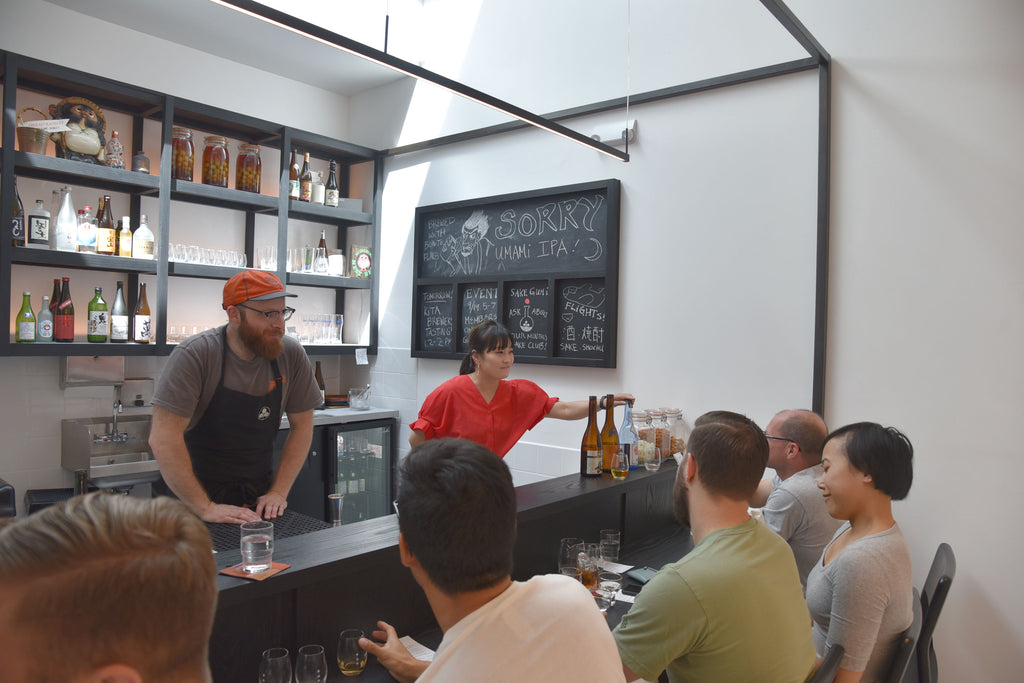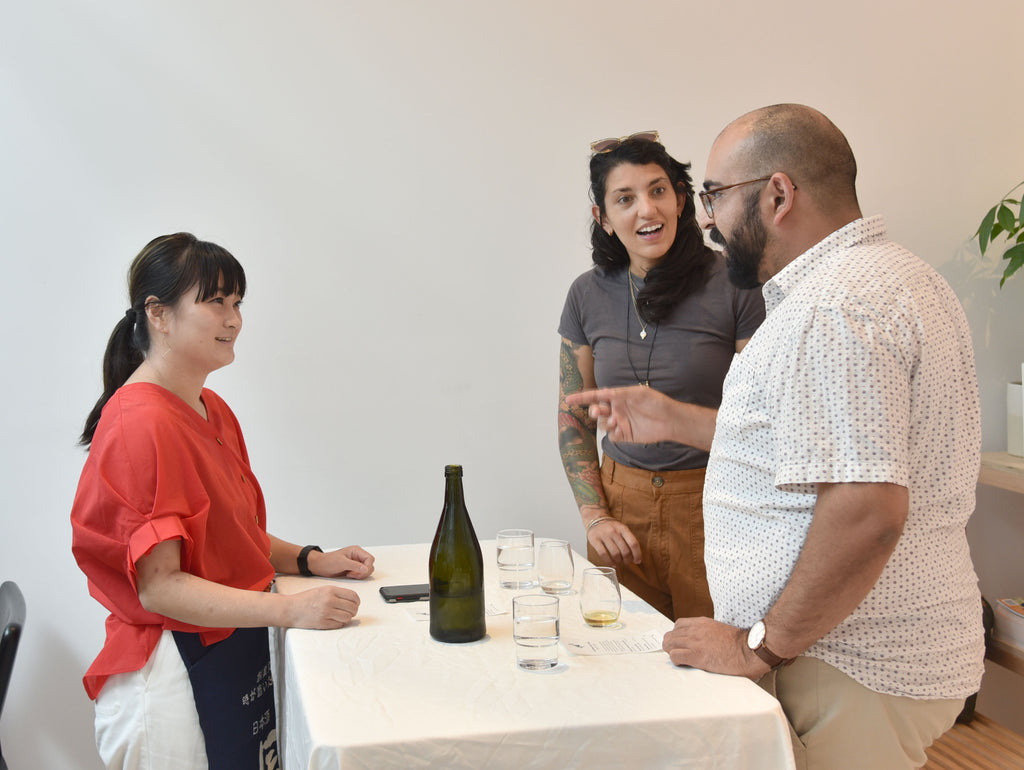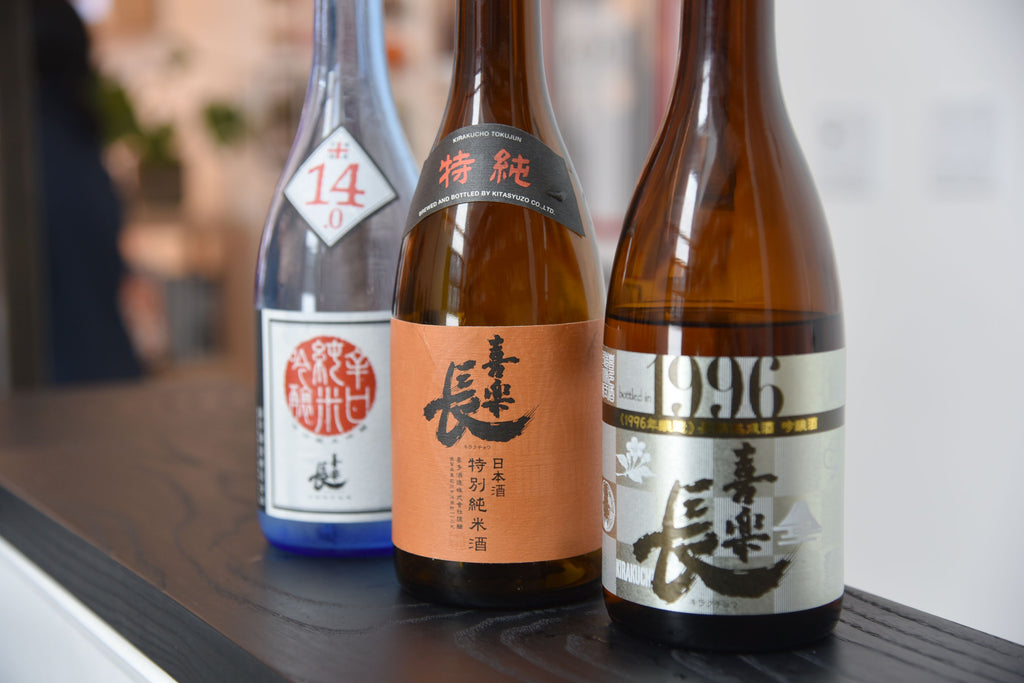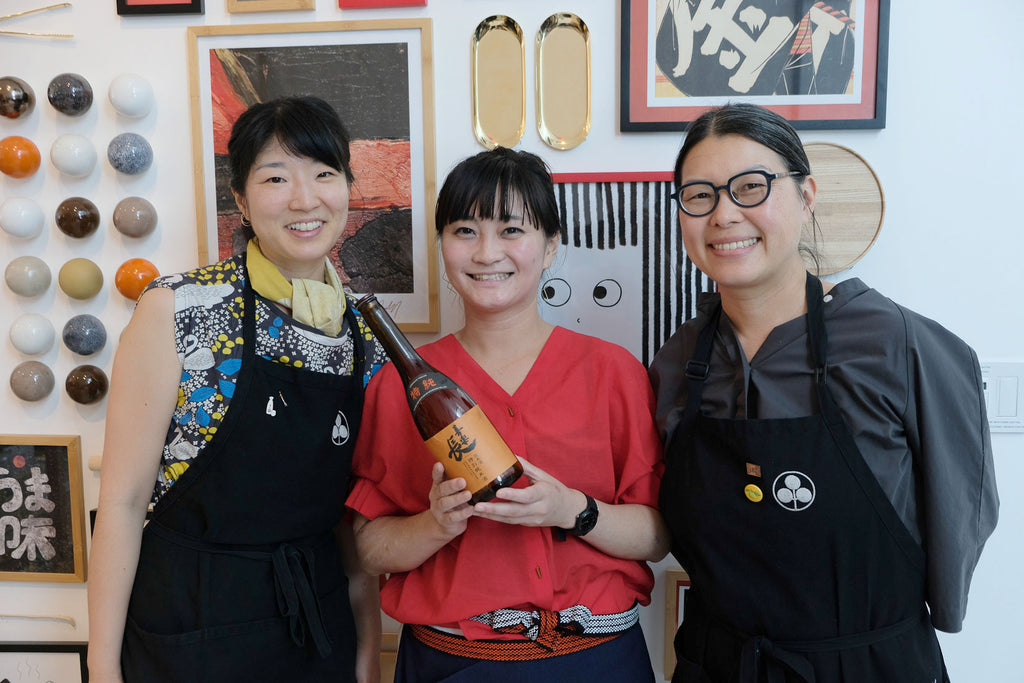
If you've followed our blog, you know that Kayoko and I went to Shiga prefecture in January, earlier this year. The main reason we went to Shiga was to see Mayuko Kita at her brewery, Kita Brewery. Her entire family was just as warm and full of enthusiasm about sake as she is. We toured Hikone Castle with her dad and brother, and later toured their family brewery. I even got to make koji with Kita!
So when Kita emailed us a month ago that she was coming, we knew we had to have her guest star at our bar! We always learn so much whenever we see her and we were thrilled she'd be able to share her expertise with everyone in Oakland.
We poured three of her sakes. She even brought one very special bottle straight from Japan: the Kirakucho Tokubetsu Junmai.

This was the first time we had a daytime weekend event at the bar. It was nice to see a packed bar as soon as we opened. People showed up to meet Kita and ask her about her sakes.

The three bottles we poured (l-r): Kirakucho Chokarakuchi Junmai Ginjo which has notes of koji, citrus and a dry ending, Kirakucho Tokubetsu Junmai which is earthy, sturdy, and layered, and Kirakucho Ginjo 1996 which has been aged since 1996 and has notes of brazil nuts, sherry, whisky.

Kita Brewery’s mantra is to, "Make sakes that have koku (richness) and kire (clean ending)." They achieve koku by cultivating their koji for 10 hours longer than usual. And the use Gin Fubuki, a local Shiga rice, assists in the kire.

A very important question one of the attendees asked was "What does Kirakucho mean?" Kita's answer was "Lots of happiness." That seemed like a very fitting name for their sakes and the event.

Photo taken by Eisuke Muroga
Stay tuned for more brewery tastings this fall! We've got a few up our sleeves.




Comments (0)
There are no comments for this article. Be the first one to leave a message!